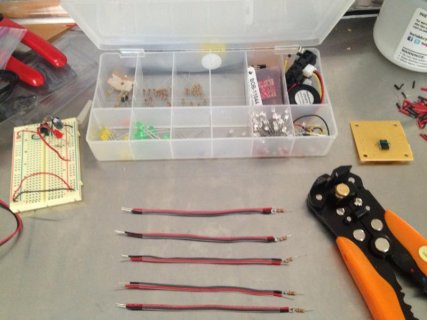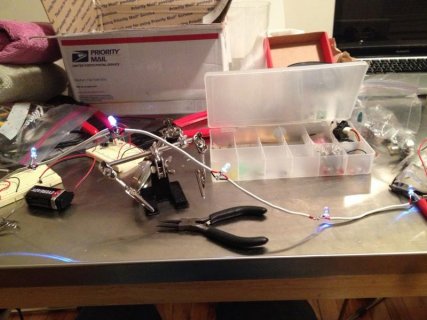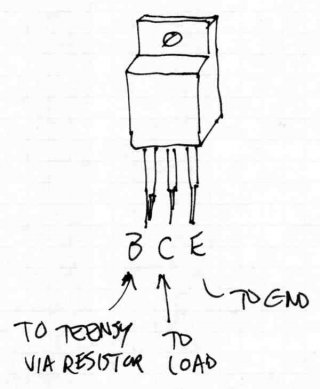togethernessnyc
Member
Hi!
I'm new to the forum as well as electronics in general.
I've been in touch with Paul Stoffgren about this, but thought I would bring my discussion to the forum for public searchability.
I'd like to power an array of fading LEDs with the Teensy. The array will not be on a matrix, but rather on a string that I've soldered together. So far, I have them soldered in parallel. I may upgrade to an LED strip within the next few days, specifically the LPD8806. For the time being, however, I'll be sticking with my self-made string of LEDs.
Since my knowledge is very rudimentary, I don't know the best way to connect the LEDs to the Teensy or which code to use. I've been searching for "fading array arduino" on Google but the results are surprisingly unhelpful. We all have to start somewhere
Thanks!
Steve
I'm new to the forum as well as electronics in general.
I've been in touch with Paul Stoffgren about this, but thought I would bring my discussion to the forum for public searchability.
I'd like to power an array of fading LEDs with the Teensy. The array will not be on a matrix, but rather on a string that I've soldered together. So far, I have them soldered in parallel. I may upgrade to an LED strip within the next few days, specifically the LPD8806. For the time being, however, I'll be sticking with my self-made string of LEDs.
Since my knowledge is very rudimentary, I don't know the best way to connect the LEDs to the Teensy or which code to use. I've been searching for "fading array arduino" on Google but the results are surprisingly unhelpful. We all have to start somewhere
Thanks!
Steve




